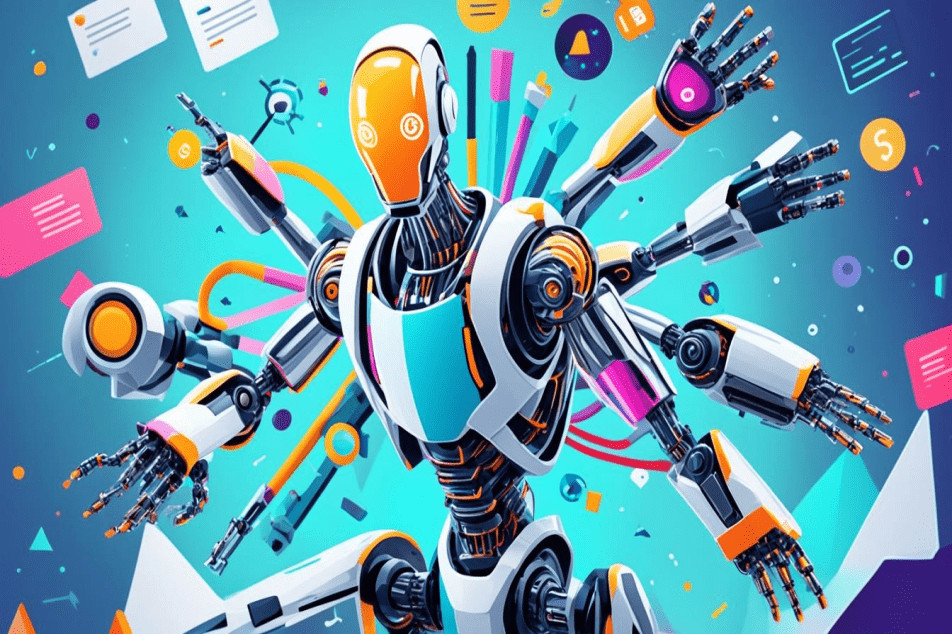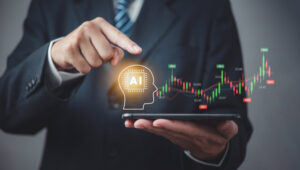The evolution of design has always mirrored technological advancements, and now, more than ever, we are witnessing a transformative shift. The intersection of artificial intelligence and design is shaping a new era of creativity. Understanding how AI adapts to design trends offers insights into the future of digital creation. This is especially significant for digital creators aiming to stay ahead in a competitive landscape.

The Growing Influence of AI in Design
AI’s influence in design is growing exponentially. From automating routine tasks to offering creative suggestions, AI is becoming an indispensable tool. As digital creators, understanding this shift is crucial. AI isn’t just a tool; it’s a collaborator, enhancing creativity and efficiency.
Historical Context of AI in Design
Historically, design has been a manual and time-intensive process. The introduction of AI has revolutionized this by automating repetitive tasks and speeding up the design process. This allows creators to focus more on creativity and innovation.
The Role of Machine Learning
Machine learning, a subset of AI, plays a significant role in this transformation. By analyzing vast amounts of data, machine learning algorithms can predict trends and provide insights that were previously inaccessible. This empowers designers to make informed decisions.
Current Design Trends Influenced by AI
Current design trends are heavily influenced by AI. For instance, personalized design experiences are becoming the norm. AI algorithms analyze user data to create designs that resonate on a personal level. This trend is particularly evident in AI for emotional design connection.
AI and Minimalist Design
Minimalist design is another trend shaped by AI. By analyzing user preferences, AI helps designers create clean and simple designs that communicate effectively. This trend is a testament to how AI can enhance user experience.
AI in Animation
AI is also making waves in animation. Tools powered by AI can create complex animations with ease, allowing for more dynamic and engaging designs. Learn more about AI for logo animation.
Future Trends and Predictions
The future of design with AI is promising. As technology evolves, we can expect AI to play an even more significant role in design. Predictive design, where AI anticipates design needs and trends, is on the horizon.
AI-Driven Personalization
AI-driven personalization will become more prevalent. By understanding user preferences, AI will create highly personalized design experiences. This will enable designers to connect with their audience on a deeper level.
Integration with Augmented Reality
Integration with augmented reality (AR) is another exciting trend. AI and AR together will create immersive design experiences that were previously unimaginable. This integration will open new avenues for creativity and innovation.
Challenges in AI-Driven Design
Despite its benefits, AI-driven design comes with challenges. One significant challenge is ensuring that AI-generated designs remain authentic and human-centered. It’s essential to balance automation with creativity.
Ethical Considerations
Ethical considerations are also crucial. AI must be used responsibly to ensure that designs are inclusive and accessible. Designers must be mindful of bias in AI algorithms and work to mitigate it.
Conclusion
The integration of AI in design is not just a trend; it’s a paradigm shift. As digital creators, embracing this change is vital. By understanding how AI adapts to design trends, we can harness its potential to create innovative and impactful designs.
For further insights on AI’s role in design, visit HubSpot’s AI in Graphic Design.

FAQ
How does AI impact the creative process in design?
AI impacts the creative process by automating routine tasks, allowing designers to focus on creativity and innovation. It also provides data-driven insights that inform design decisions.
What are the ethical considerations of using AI in design?
Ethical considerations include ensuring designs are inclusive and accessible, and addressing biases in AI algorithms. Designers must use AI responsibly to create equitable designs.
How can digital creators stay updated with AI trends in design?
Digital creators can stay updated by engaging with industry publications, attending conferences, and experimenting with AI tools. Resources like top innovations in AI for design provide valuable insights.







